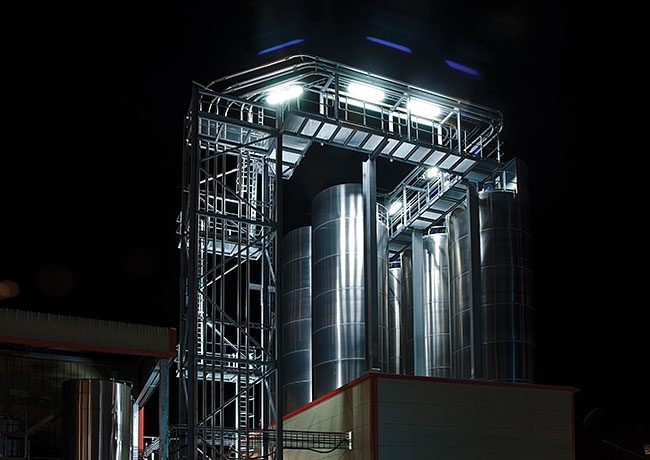
Steady as She Doughs
May 1, 2015
By Allan Biddle
Vacuum transfer aids consistency
 State-of-the-art OAL dry materials handling system for a U.K. bakery. Photo: Allan Biddle
State-of-the-art OAL dry materials handling system for a U.K. bakery. Photo: Allan BiddleOne of the key challenges leading bakeries in the U.K. face is the ability to consistently manufacture dough. The ability of a bakery process to manufacture consistent dough has a direct effect on the bottom line.
Without consistent dough it becomes almost impossible to optimise the remainder of the baking process for quality, cost-effectiveness and consistency because of variances in the dough.
At the beginning of the baking process, flour is mixed with water and other ingredients to make dough. It follows that inconsistent dough production will inevitably lead to poor loaf quality downstream in the form of varying colour, texture and size.
Bakeries are aiming to minimise the variance of their dough in terms of ingredient ratios, consistency and mix energy. By minimising the variance of the dough, manufacturers can
optimise the rest of the baking process to consistently produce a high quality loaf.
This is challenging and manufacturers invariably are reduced to applying on-line changes to ingredients to try and maintain some stability.
For instance, during the mixing phase, maintaining consistent temperature of the dough is imperative. If the temperature isn’t right, the fermentation rate will be faster or slower during the proofing period, which will influence the volume of the bread and the colour of the crust.
Overcoming
Working with one of the U.K.’s leading bakeries, OAL Group has found the key drivers for consistency are accuracy and repeatability of ingredient feeds, temperatures, and understanding the role that moisture plays in the process.
For instance, moisture content in the batched flour is largely influenced by the delivery air temperature and pressure. Hence the ability of a system to maintain the same temperature and pressure will have a direct effect on the varying moisture content of dough produced.
Over the past five years, OAL Group has been one of the most active suppliers of dry materials handling systems in the U.K. baking industry, installing and commissioning more than £30 million worth of new dry materials handling systems for one of the largest bakeries in the U.K.
A major process change has been to switch to vacuum transfer systems for ingredients.
Why Vacuum Transfer Ingredients
The key benefit of vacuum transfer is the huge reduction in the amount of energy added during flour transfers. This directly results in steady predicable development of the dough temperatures and more even proofing, in turn improving the consistency of crust colour and volume control.
Vacuum transfer of ingredients has enabled the production of a fantastic loaf with excellent softness and freshness based upon the system’s ability to achieve consistent dough. The OAL system has reduced the unit cost per product and the largest bread plant in the group produces 10,000 loaves per hour.
For more information, please visit www.oalgroup.com.
Allan Biddle is a senior process engineer with OAL Group.
Print this page
Leave a Reply